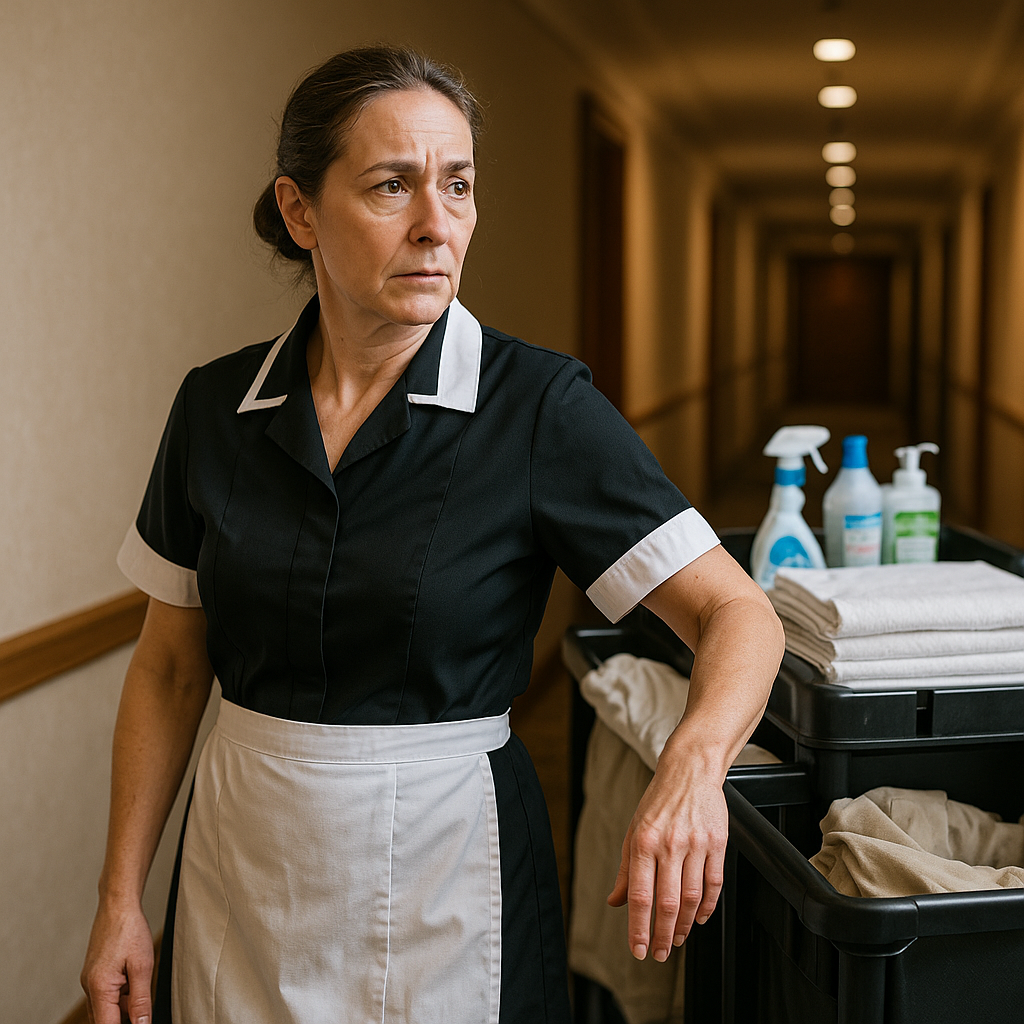Hotel and Hospitality Worker Safety Protocols are crucial in maintaining a secure environment for both staff and guests. With long shifts, diverse tasks, exposure to chemicals, and the potential for unpredictable guest behavior, hospitality workers face unique and often underreported risks.

An effective Occupational Health, Safety, and Environment (OHSE) strategy is vital to protect the physical and mental well-being of employees across hotels, resorts, and other lodging facilities.
Why Safety Protocols Are Critical in the Hospitality Industry
Unlike industrial sites, hotels are open and dynamic spaces where workers interact directly with the public, often in fast-paced or physically demanding conditions. Common hazards include:
- Slips, trips, and falls from wet or cluttered floors
- Exposure to cleaning chemicals and laundry hazards
- Manual handling injuries while lifting linens, mattresses, or luggage
- Verbal or physical harassment by guests
- Fatigue and burnout from irregular hours and shift work
Without standardized safety protocols, hospitality employees remain vulnerable to preventable injuries, illness, and mental health decline.

Key Hotel and Hospitality Worker Safety Protocols
1. Slip, Trip, and Fall Prevention
Housekeeping and kitchen staff are especially prone to slips due to wet floors, misplaced items, or poor lighting. Safety protocols should include:
- Immediate clean-up of spills and wet floor signage
- Non-slip mats in laundry and kitchen areas
- Adequate lighting in hallways, stairwells, and service corridors
- Housekeeping carts organized to reduce obstruction
Regular safety inspections help identify and correct hazards before accidents occur.
2. Chemical Safety and Cleaning Protocols
Cleaning staff handle a range of chemical agents that may be corrosive, irritating, or produce toxic fumes. Follow these best practices:
- Use Safety Data Sheets (SDS) for all chemicals
- Train staff in proper handling, storage, and disposal
- Provide appropriate PPE: gloves, aprons, goggles, and masks
- Avoid mixing chemicals (e.g., bleach and ammonia) to prevent dangerous reactions
Label all containers clearly and conduct routine safety audits of chemical storage rooms.
3. Ergonomics and Manual Handling
From making beds to handling guest luggage, repetitive or awkward tasks can lead to musculoskeletal injuries. Solutions include:
- Lifting aids and trolleys for moving heavy items
- Stretching breaks and ergonomic training for staff
- Encouraging team lifts for bulky loads
- Training on proper lifting posture and techniques
Provide tools such as long-handled mops or vacuums to reduce strain.
4. Violence and Harassment Prevention
Hospitality workers are sometimes subjected to abusive behavior, especially during night shifts or in isolated areas. Ensure:
- Panic buttons or wearable alarms for room attendants
- Two-way radios or communication systems
- Mandatory incident reporting protocols
- Policies supporting zero tolerance of harassment or violence
Training on de-escalation and situational awareness is also essential for front-line staff.
5. Infection Control and Hygiene Standards
Especially since the COVID-19 pandemic, infection control remains a high priority in the hotel sector. Safety measures include:
- Proper laundering protocols for linens and uniforms
- Regular disinfection of high-touch surfaces
- PPE during cleaning (especially for biohazard incidents)
- Policies for sick leave and health monitoring
Encourage hand hygiene with accessible sanitizer stations throughout staff areas.
6. Fatigue Management and Shift Scheduling
Long shifts, back-to-back bookings, and weekend work can lead to burnout. Good safety management should:
- Implement fair and predictable shift rotations
- Provide adequate breaks during and between shifts
- Monitor overtime and encourage rest
- Promote mental health resources and EAP access
Managers should check in with staff regularly to spot signs of fatigue or stress.
Creating a Culture of Safety in Hospitality
Safety protocols are only effective when supported by a culture of care and communication. Key steps:
- Include safety training in new hire onboarding
- Conduct regular toolbox talks and refresher sessions
- Encourage anonymous hazard and incident reporting
- Recognize and reward safe practices
Empowering employees to speak up about unsafe conditions is vital for lasting change.
Legal Obligations and OHSE Standards
In Canada and many other regions, hospitality employers are bound by general duty clauses under OHSA or equivalent legislation. This includes:
- Providing a safe work environment
- Offering training and protective equipment
- Preventing workplace violence and harassment
Resources such as OHSE.ca, CCOHS, and WorkSafeBC provide industry-specific guides and standards.
(All external links are DoFollow for SEO optimization.)

Hospitality Worker Safety Protocols: Summary Table
| Hazard | Control Measures |
|---|---|
| Slips, Trips, Falls | Signage, mats, lighting, inspections |
| Chemical Exposure | SDS access, PPE, training, safe storage |
| Manual Handling Injuries | Trolleys, ergonomic tools, training |
| Workplace Violence | Alarms, communication tools, de-escalation training |
| Infection Risk | PPE, disinfection, laundering standards |
| Fatigue and Stress | Shift planning, breaks, mental health support |
Final Thoughts
Hotel and Hospitality Worker Safety Protocols are essential to prevent harm, foster a culture of care, and retain valued staff. In a service-focused industry, safe and healthy employees are the foundation of guest satisfaction and business sustainability.
Whether managing a boutique hotel or a global resort chain, investing in OHSE practices pays off in productivity, morale, and legal protection.

No comments yet